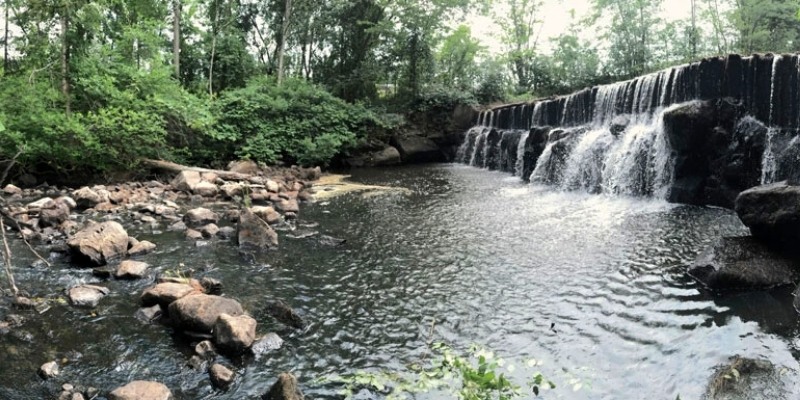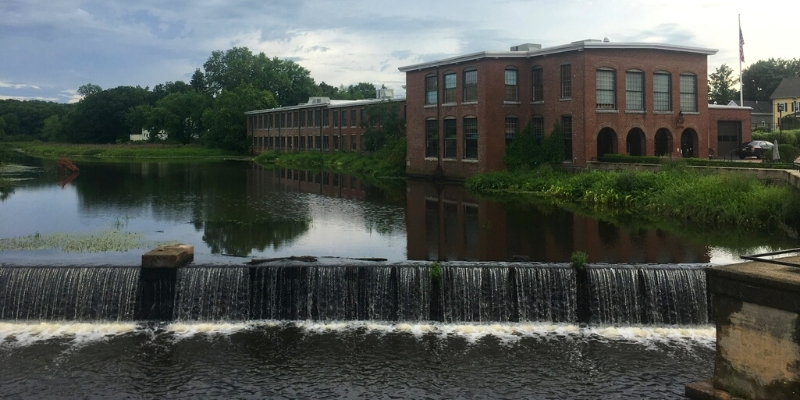
The photo above, taken at the South Middleton Dam shows the low flow in the mid to upper river, with little water flowing over the dam. (Photo taken 7/22/2020)
On June 23rd this year, the flow of the Ipswich river dropped below the flow recorded on that same date in 2016 which turned out to be at the beginning of the worst drought in the River’s history. Shortly after that date, the State declared a level 2 severe drought for our region and the long range forecast was for continued dry, hot weather with no significant rains in sight.
Were we about to repeat 2016 all over again? Fortunately, as often happens in the summertime, a series of thunderstorms came through in early July providing some relief. Unfortunately, as is often the case, these storms were incredibly isolated and were focused on the immediate coast which largely missed the headwaters and middle watershed.
As such, while flows in the lower river somewhat recovered, severe drought conditions deepened in the upper river with flows remaining well below the ecological threshold near historic lows. The ecological threshold is the scientifically determined flow rate below which river species become stressed and cannot survive for long. Much below this level, they die and only the hardiest of species adapted to warm, stagnant water can make it through.
 While water levels remain low in the mid to upper river, down river in Topsfield and Ipswich summer thunderstorms have raised flow from below 2016 drought levels back to the ecological threshold (photo taken 7/23/2020).
While water levels remain low in the mid to upper river, down river in Topsfield and Ipswich summer thunderstorms have raised flow from below 2016 drought levels back to the ecological threshold (photo taken 7/23/2020).
The Ipswich River is the most flow depleted major river basin in Massachusetts due primarily to summertime groundwater withdrawals and water exports outside the basin. If we just reduced summertime groundwater pumping and kept our treated wastewater in the basin, the river would flow year round above the ecological threshold even during droughts.
Groundwater is the elixir for all rivers keeping them flowing with cool, well-oxygenated water in between intermittent summertime thunderstorms making the river suitable for river species. This year’s variable rain patterns exemplified this point for all to see. Please help us advocate for groundwater protection and water conservation in all our towns; our river depends on it!

 While water levels remain low in the mid to upper river, down river in Topsfield and Ipswich summer thunderstorms have raised flow from below 2016 drought levels back to the ecological threshold (photo taken 7/23/2020).
While water levels remain low in the mid to upper river, down river in Topsfield and Ipswich summer thunderstorms have raised flow from below 2016 drought levels back to the ecological threshold (photo taken 7/23/2020).
thank you for this beautiful website. I am participating in a course this week that asked us to research our watersheds as part of our identity; I am so honored to read Wayne’s excellent essay and the rest of the website, and I am so glad to be a member of IRWA. 350,000 people indeed!
“Groundwater is the elixir for all rivers ….” You are a poet!